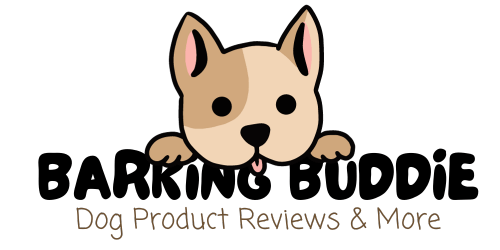If you’re a dog lover looking to connect with other like-minded individuals, starting your own dog community can be a fantastic way to bring people together and create a supportive network. Whether you’re interested in organizing playdates, sharing training tips, or simply socializing with fellow dog owners, this article will provide you with valuable tips and insights to help you get started. From finding the right location to fostering a welcoming and inclusive atmosphere, these expert suggestions will empower you to create a thriving dog community that will enrich the lives of both humans and their furry companions.

Identify Your Objective
Define the Purpose of Your Dog Community
Before starting a dog community, it’s essential to identify the purpose of your community. What do you hope to achieve? Are you looking to create a platform for dog owners to connect and share their experiences? Or do you want to provide educational resources and support for dog owners? Defining the purpose will help guide your decisions throughout the process of building and growing your community.
Identify Your Target Audience
Understanding your target audience is crucial in creating a successful dog community. Consider the demographics of dog owners you want to reach. Are you targeting a specific breed or age group? Are you focusing on new dog owners or experienced ones? Identifying your target audience will allow you to tailor your community’s content and features to appeal to them.
Set Clear Goals and Objectives
To effectively launch and manage a dog community, it’s important to set clear goals and objectives. What do you hope to accomplish through your community? Is your primary goal to create a supportive network for dog owners, or do you want to generate revenue through partnerships and sponsorships? Having concrete goals will help you stay focused and measure the success of your community.
Research and Planning
Conduct Market Research
Before diving into creating your dog community, take some time to conduct market research. This will involve analyzing the current landscape of dog communities and identifying any gaps or opportunities. Look at what other communities are offering, their strengths and weaknesses, and how you can differentiate yourself in the market.
Analyze Existing Dog Communities
Researching existing dog communities can provide valuable insights into what works and what doesn’t. Take note of their community guidelines, the types of content they share, and how they engage with their members. This analysis will help you understand the needs and preferences of dog owners, allowing you to create a community that fills those gaps.
Create a Solid Business Plan
Developing a comprehensive business plan is crucial for the success of your dog community. Outline your goals, marketing strategies, revenue streams, and budget. Consider both short-term and long-term plans, and ensure that your business plan aligns with your objectives. This plan will serve as a roadmap for your community’s growth and sustainability.

Choose a Community Type
Decide on an Online or Offline Community
One of the first decisions you need to make is whether to create an online or offline community. Online communities offer convenience and allow for a wider reach, while offline communities provide more personal interactions. Consider the preferences of your target audience and the resources you have available when making this decision.
Consider Different Community Models
There are various community models to consider when starting your dog community. You could create a forum-style community where people can ask questions and share advice, or you could focus on organizing events and meet-ups for dog owners to connect in person. Evaluate your objectives and target audience to determine which community model will be the best fit.
Determine the Size and Scope of Your Community
Decide on the size and scope of your dog community based on your available resources and target audience. Do you want to create a small, tightly-knit community or reach a larger audience? Consider the level of engagement and support you can provide based on the size of your community. Start small and scale up as your community grows.
Create a Brand and Identity
Develop a Memorable Name and Logo
Creating a strong brand and identity is essential for your dog community. Choose a memorable name that captures the essence of your community and resonates with dog owners. Design a logo that reflects your community’s values and visually represents your brand. Your name and logo should be easily recognizable and reflect the unique identity of your community.
Design a Professional Website and Social Media Profiles
Your online presence is critical in attracting and engaging with members of your dog community. Create a professional website that is easy to navigate, visually appealing, and showcases the content and features of your community. Establish social media profiles on platforms where your target audience is active to expand your reach and connect with potential members.
Craft a Unique Brand Voice and Tone
Developing a unique brand voice and tone will help your community stand out and establish a consistent identity. Consider the personality of your community and the values you want to convey. Are you aiming for a casual and playful tone or a more professional and informative one? Crafting a consistent brand voice will enhance the overall experience for your community members.

Build a Strong Online Presence
Create Engaging Content for Your Website and Social Media
To keep your dog community active and attract new members, it’s important to create engaging content. Share informative articles, helpful tips, and inspiring stories related to dogs. Encourage community members to contribute their own content and provide opportunities for them to share their experiences. Regularly post fresh and relevant content to keep your community engaged.
Utilize Search Engine Optimization (SEO) Techniques
Optimizing your website and content for search engines will help increase visibility and attract organic traffic. Research relevant keywords and incorporate them into your content, meta descriptions, and title tags. Use alt tags on images and ensure your website is mobile-friendly. Implementing SEO techniques will improve your community’s visibility in search engine results.
Leverage Social Media and Online Advertising
Social media platforms provide a fantastic opportunity to connect with your target audience and showcase your dog community. Develop a strategic social media plan, posting regular updates, engaging with followers, and utilizing relevant hashtags. Consider investing in online advertising to further expand your community’s reach and attract new members.
Establish Community Guidelines
Define Rules and Regulations for Members
Creating clear and concise community guidelines is crucial to ensure a positive and respectful environment for all members. Clearly outline what behavior is acceptable and what is not. Establish rules regarding appropriate language, posting etiquette, and the sharing of personal information. Make it clear that any violations of the guidelines may result in consequences, up to and including expulsion from the community.
Encourage Respectful Behavior and Positive Communication
Fostering a supportive and inclusive community culture starts with encouraging respectful behavior and positive communication. Emphasize the importance of kindness, empathy, and constructive feedback. Encourage members to engage in civil discussions and discourage any form of harassment or negativity. Regularly monitor the community and intervene when necessary to maintain a positive atmosphere.
Moderate and Enforce Guidelines Fairly
As the community leader, it’s your responsibility to moderate and enforce the established guidelines fairly. Regularly monitor discussions, posts, and comments to ensure they align with the community’s standards. Address any violations promptly and professionally, providing guidance and, if necessary, issuing warnings or temporary suspensions. Consistent and fair moderation will help cultivate a healthy and respectful community.

Encourage Member Participation
Design Interactive Features and Functions
To encourage member participation, provide interactive features and functions within your dog community platform. Incorporate forums, chat rooms, and messaging capabilities to facilitate discussions and connections. Enable members to create profiles, share their experiences, and engage with one another. Consider gamification elements like badges or rewards to incentivize engagement.
Organize and Promote Events and Activities
Organizing events and activities is an excellent way to build community spirit and facilitate offline interactions among members. Arrange meet-ups, training sessions, or fundraising events that align with your community’s objectives. Promote these events through your website, social media channels, and local pet businesses to attract participation and generate excitement.
Offer Incentives for Active Participation
Offering incentives for active participation can motivate members to engage more with your dog community. Consider running contests, giveaways, or exclusive member rewards for those who actively contribute, share valuable insights, or refer others to join the community. Recognizing and rewarding member participation will foster a sense of belonging and encourage ongoing engagement.
Connect with Like-Minded Partners
Collaborate with Local Pet Businesses and Organizations
Building partnerships with local pet businesses and organizations can benefit both your community and these entities. Collaborate on events, promotions, or content creation to provide added value to your community members. Reach out to local veterinarians, pet stores, or dog trainers to explore potential partnerships that align with your community’s interests and objectives.
Establish Relationships with Influencers and Experts
Connecting with influencers and experts in the dog industry can enhance your community’s credibility and attract new members. Collaborate with popular dog-related influencers for guest posts, interviews, or featured content. Seek out experts in dog training, health, or behavior to contribute educational resources or answer community questions. These relationships can provide valuable insights and expertise to your community.
Join or Form Partnerships with Dog-related Associations
Exploring partnerships with established dog-related associations can help amplify your community’s reach and influence. Joining these associations exposes your community to a broader network of dog owners and industry professionals. Consider collaborating on events, cross-promoting content, or seeking endorsements from reputable associations to enhance your community’s reputation and credibility.

Provide Valuable Resources
Offer Educational Articles and Guides
Providing educational resources is a key element of a successful dog community. Develop and share informative articles, guides, and tutorials on various topics such as dog training, health, nutrition, or behavior. Ensure that these resources are accurate, well-researched, and valuable to your community members. Establish yourself as a trusted source of information within the dog owner community.
Create a Directory of Trusted Service Providers
Compile a directory of trusted service providers, such as veterinarians, groomers, trainers, or pet sitters, that can benefit your community members. Verify the qualifications and reputation of these providers to ensure they meet the high standards of your community. Offering a trusted directory will save your members time and effort in finding reliable services for their dogs.
Share Health and Wellness Tips for Dogs
Promoting the health and wellness of dogs is a top priority for any dog community. Share tips, advice, and best practices for ensuring the well-being of dogs. Cover topics like nutrition, exercise, grooming, and preventive care. Collaborate with veterinarians or other experts to provide accurate and up-to-date information. Empowering your community members with knowledge will strengthen their bond with their canine companions.
Grow and Sustain Your Community
Continuously Engage with Community Members
Actively engaging with your community members is vital for its growth and sustainability. Respond to comments, answer questions, and acknowledge contributions regularly. Foster a sense of community by encouraging discussions, facilitating connections between members, and showing genuine interest in their experiences. By being actively present, you can build trust and loyalty within your community.
Monitor and Adapt to Changing Needs
Stay attuned to the evolving needs and preferences of your dog community. Monitor engagement metrics, feedback, and member surveys to identify areas for improvement or expansion. Adapt your content, features, or events based on the feedback received. Being responsive to the needs of your community will demonstrate your commitment and ensure its long-term success.
Create a Membership and Revenue Generation Strategy
To sustain your community, it’s important to develop a membership and revenue generation strategy. Determine whether you will offer free or paid membership levels and what benefits each level provides. Explore revenue streams such as sponsored content, affiliate partnerships, or premium offerings. Create a strategy that aligns with your community’s values while providing sustainable financial support for its growth and operation.
Starting your own dog community can be a rewarding endeavor that brings together dog owners, fosters connections, and enhances the lives of dogs and their human companions. By following these tips and taking a thoughtful approach, you can lay a solid foundation for building a thriving and impactful dog community. Remember to stay true to your objectives, engage with your members, and adapt to their changing needs to ensure the long-term success of your community.


